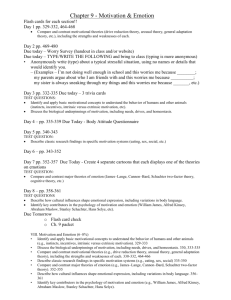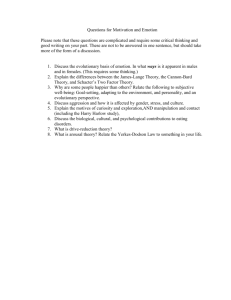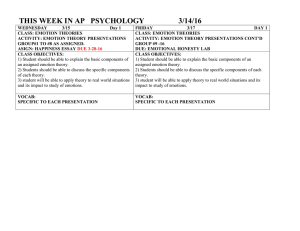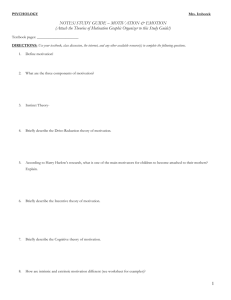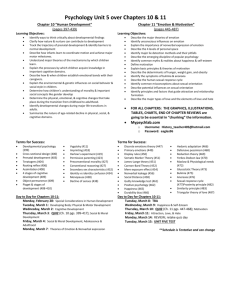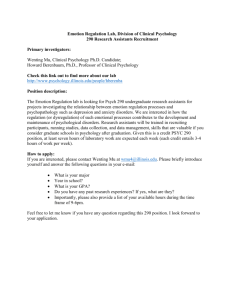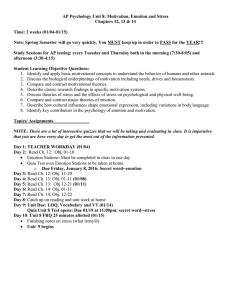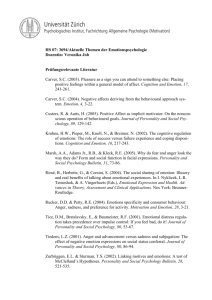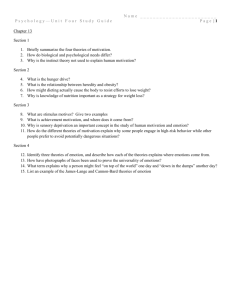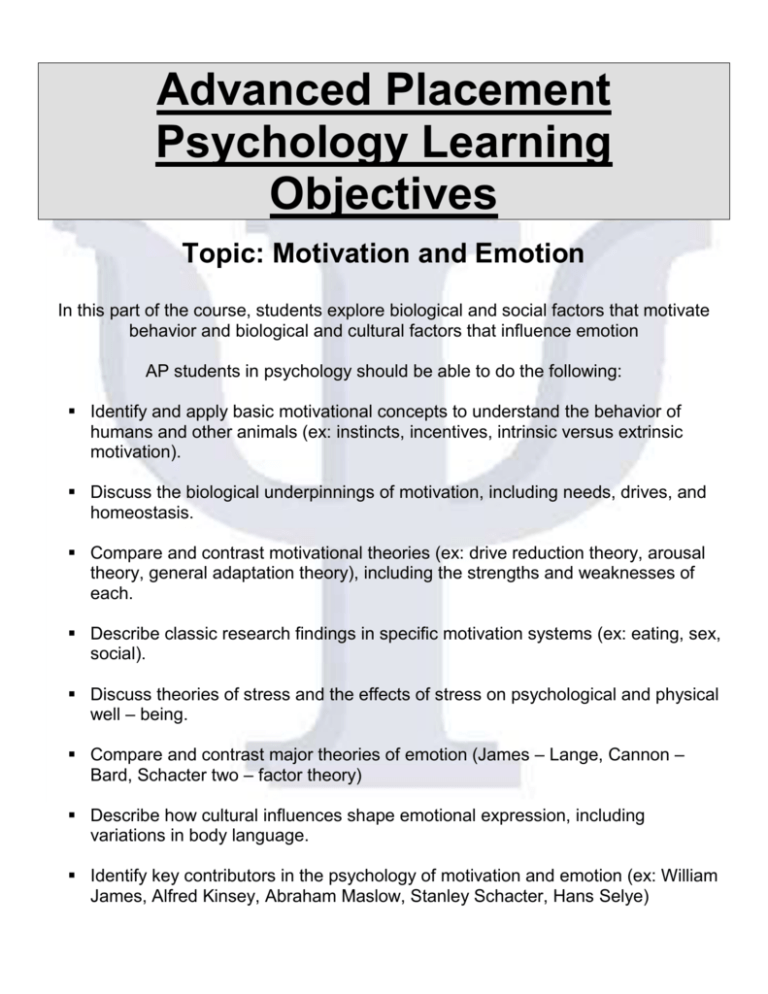
Advanced Placement
Psychology Learning
Objectives
Topic: Motivation and Emotion
In this part of the course, students explore biological and social factors that motivate
behavior and biological and cultural factors that influence emotion
AP students in psychology should be able to do the following:
Identify and apply basic motivational concepts to understand the behavior of
humans and other animals (ex: instincts, incentives, intrinsic versus extrinsic
motivation).
Discuss the biological underpinnings of motivation, including needs, drives, and
homeostasis.
Compare and contrast motivational theories (ex: drive reduction theory, arousal
theory, general adaptation theory), including the strengths and weaknesses of
each.
Describe classic research findings in specific motivation systems (ex: eating, sex,
social).
Discuss theories of stress and the effects of stress on psychological and physical
well – being.
Compare and contrast major theories of emotion (James – Lange, Cannon –
Bard, Schacter two – factor theory)
Describe how cultural influences shape emotional expression, including
variations in body language.
Identify key contributors in the psychology of motivation and emotion (ex: William
James, Alfred Kinsey, Abraham Maslow, Stanley Schacter, Hans Selye)

